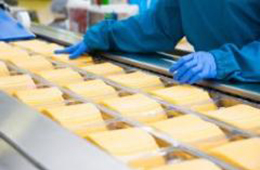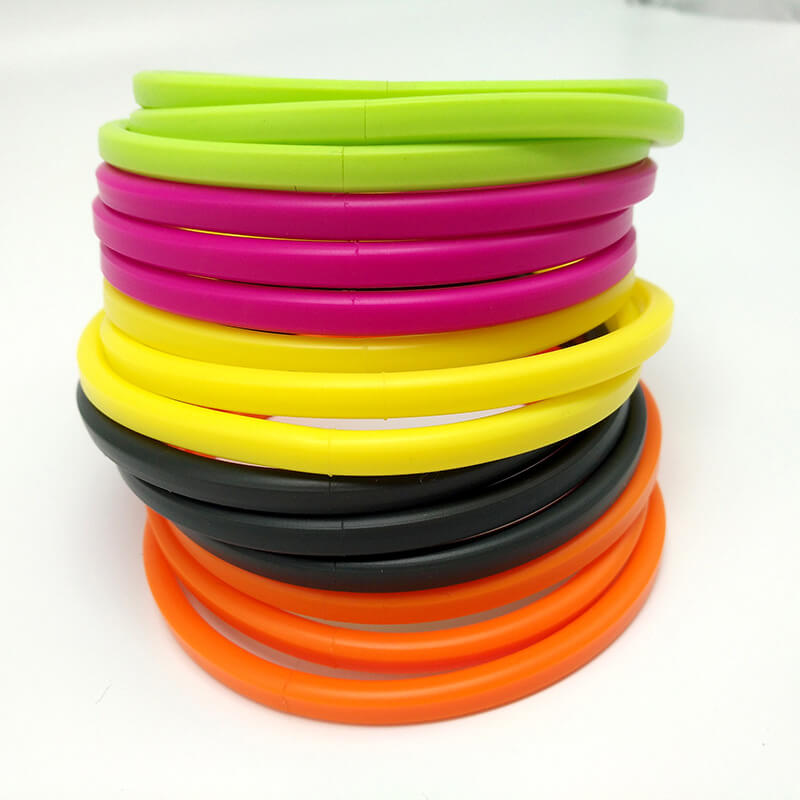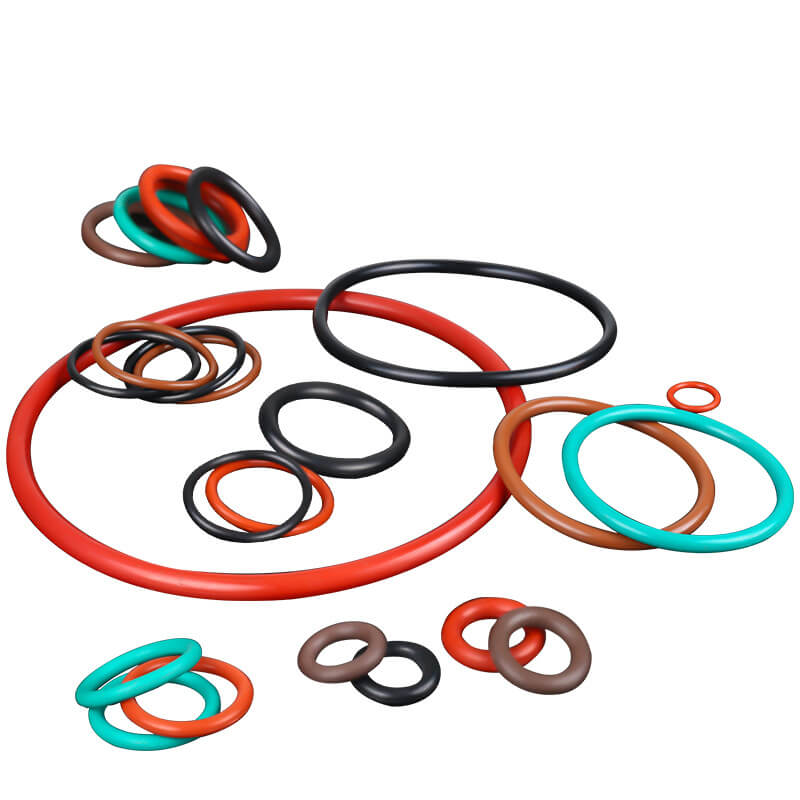Food-grade silicone tubing is a versatile and essential component in various food processing and handling applications. Renowned for its ability to withstand extreme temperatures, silicone tubing facilitates the transfer of liquids without compromising the quality or safety of the food or beverage it contacts.
The durability and resilience of this material make it superior to many other types of tubing, especially when subjected to the stress of temperature fluctuations and aggressive cleaning protocols.
Withstanding temperatures ranging from as low as -100°F to as high as 500°F, food-grade silicone tubing offers a broad temperature spectrum for food and beverage industry needs. Let’s examine the main advantages of utilizing food-grade silicone tubing in this critical industry.
What is Food-Grade Silicone Tubing?
Food-grade silicone tubing is a highly flexible, transparent tube made from a special formulation of silicone materials that are safe for use in food and beverage applications.
Its temperature resistance is unmatched, allowing it to endure extreme temperatures without losing its structural integrity or affecting the taste or purity of the food products it transports. This makes it an ideal choice for tasks involving hot or cold liquids, such as in food storage or beverage dispensing systems.
Unlike plastic tubing that may contain harmful plasticizers, food-grade silicone is free from such additives, ensuring that no unwanted chemicals leach into the food or beverage it contacts.
The silicone’s vulcanization process enhances its chemical properties, contributing to its strength and longevity. This process ensures that the tubing can handle rigorous use in demanding environments without degrading.
Furthermore, food-grade silicone tubing is recognized for its NSF-51 certification, which means it has been rigorously tested to meet specific standards for safety in food contact applications. This certification is a mark of quality assurance that resonates with manufacturers and consumers alike. In addition, the tubing’s composition results in non-hazardous waste, aligning with industry practices that aim to minimize environmental impact.
Food-grade Grade Silicone Tubing Advantages
Food-grade silicone tubing is a crucial component in food and beverage processing due to its exceptional properties. Below, we’ll discuss the main advantages of using food-grade silicone tubing in these industries:
Durability
Durability is a hallmark of food-grade silicone tubing, making it a preferred choice for long-term use in various food handling scenarios. Its robustness comes from the quality of materials and manufacturing processes that impart a high level of resistance to physical stressors. This durability ensures that the tubing maintains its shape and functionality over time, even when exposed to the rigorous conditions of industrial food processing.
In addition to its strong resistance to tearing and abrasion, the tubing’s resilience to chemical cleaners and sanitizers reinforces its longevity. The ability to withstand such harsh treatments without degrading is a testament to the tubing’s durability and reliability, providing peace of mind for businesses that demand high-performance materials for their operations.
High and Low-Temperature Resistance
Food-grade silicone tubing is renowned for its broad temperature range tolerance, which is essential in applications where consistent performance across varying temperature conditions is required.
This characteristic is particularly beneficial in the drinks vending industry, where tubing must handle both hot and cold liquids without losing its durability and flexibility. Such temperature resistance ensures that the tubing remains functional and safe, regardless of the temperature of the beverage being dispensed.
From steaming hot coffee to chilled soft drinks, vending machines rely on the temperature adaptability of silicone tubing to deliver quality beverages consistently. This resistance to high and low temperatures not only extends the lifespan of the tubing but also contributes to the maintenance of taste and quality standards that consumers expect from their vending machine experiences.
Neither Poisonous Nor Odorous
Food-grade silicone tubing is carefully manufactured to be free from toxic substances, ensuring that it does not impart harmful chemicals into the food or beverage products that pass through it. This non-toxicity is critical for maintaining the safety and quality of consumable goods.
Additionally, silicone tubing does not have any inherent odors that could potentially transfer to the products it handles, making it an ideal choice for preserving the original flavors and aromas of foods and beverages.
The absence of poisonous and odorous elements in the tubing is important for consumer safety and compliance with industry regulations. Manufacturers can rely on food-grade silicone tubing to meet stringent health standards without compromising product integrity or customer satisfaction.
Non-Stick Properties
Food-grade silicone tubing has inherent non-stick properties, which is a significant advantage when handling food and beverages that are prone to leaving residues.
These properties prevent substances from adhering to the inner surface of the tubing, thereby reducing the risk of contamination and making the cleaning process more straightforward. The ease of maintaining a clean and hygienic transfer system is crucial for food safety and quality control.
Additionally, the FDA-approved nature of silicone tubing means that it meets the high standards set for materials that come into contact with food products. This certification provides assurance that the tubing is suitable for use in food processing environments where adherence to strict hygiene and safety protocols is mandatory.
Chemically Inert
One of the significant benefits of food-grade silicone tubing is its chemically inert nature. This means that the tubing does not react with the foods, beverages, or cleaning agents it comes into contact with, maintaining the purity of the contents it carries. Silicone’s inertness also contributes to its stability and longevity, as it is less likely to degrade or deteriorate over time due to chemical interactions.
Non-Porous
The non-porous nature of food-grade silicone tubing is another key advantage, creating a barrier that prevents the absorption and permeation of gasses, liquids, or bacteria. This characteristic is essential for maintaining the sterility of the products that flow through the tubing, as it eliminates the possibility of microorganism growth within the tubing walls. The result is a more hygienic process and a reduction in the risks associated with product contamination.
Resistance to Mildew and Bacteria
The design of food-grade silicone tubing ensures that it is highly resistant to the growth of mildew and bacteria, which is critical for applications involving food and beverage processing. This resistance is due to the smooth surface and non-porous structure of the tubing, which provide few places for microorganisms to adhere and multiply. Maintaining a clean and sanitary environment is paramount in the food and beverage processing industry, and silicone tubing plays a vital role in achieving this standard.
Environmentally Responsible
Food-grade silicone tubing’s contribution to environmental responsibility is noteworthy. It is designed to be a reusable and durable solution, helping to combat single-use plastics and reduce waste in the food and beverage industries. The ability of silicone over other plastics to endure repeated use without significant wear contributes to a decrease in the overall environmental footprint of manufacturing and processing operations.
Certification NSF-51
Attaining NSF-51 certification is a rigorous process that food-grade silicone tubing must undergo to ensure its suitability for food contact applications. This certification is a testament to the tubing’s compliance with strict health and safety standards, providing an added layer of assurance for manufacturers and end-users. It verifies that the material does not release any harmful contaminants into the food or beverage it transports, maintaining the quality and safety of the product.
Applications of Food Grade Silicone Tubing
Thanks to its durability and flexibility, food-grade silicone tubing serves many purposes within the food and beverage industry. Its chemical resistance and heat tolerance make it ideal for applications involving hot or acidic food products.
The process of silicone manufacturing yields tubing that is not only suited for food industry applications but also meets the rigorous demands of beverage transfer in both the soft drink and vending industries. The following are the main applications of food-grade silicone tubing:
Oil Transfer
In the realm of oil transfer, silicone heat shrink tubing is highly valued for its compliance with food safety standards. Its inertness and resistance to chemicals ensure that it does not alter the composition or taste of edible oils during transfer. This is crucial in maintaining the quality and purity of oils that are often sensitive to contamination.
Sauce Dispensing
Food-grade silicone tubing is an excellent choice for sauce dispensing applications in commercial kitchens and food production facilities. Its non-stick properties ensure that even thick, viscous sauces flow smoothly, reducing waste and simplifying the cleaning process. This is particularly beneficial for operations that require precise quantities of sauces, such as condiment packaging or automated food preparation processes.
Beverage Transfer
When it comes to beverage transfer, reusable food-grade silicone tubing presents several advantages. Primarily, it maintains the integrity of beverages by preventing any leaching of harmful chemicals, ensuring the highest standards of food safety. Dairy-flex silicone milk tubing is made of materials suitable for dairy products. This is essential when transferring beverages such as juices, soft drinks, and dairy products, where any alteration in taste or contamination can have significant consequences.
Marinade Injection
Marinade injection is another area where food-grade silicone tubing shines. The tubing’s non-reactive properties make it safe for contact with a wide range of marinades, including those that are acidic or contain strong flavors. Furthermore, the non-porous surface of the silicone tubing ensures that marinades are not absorbed into the tubing, which might otherwise lead to flavor carry-over or bacterial growth.
Vacuum Lines
In the context of vacuum lines, food-grade silicone tubing is indispensable. The strength and durability of silicone allow the tubing to maintain its structure under the pressure differentials involved in vacuum applications. This is particularly important in the food industry, where vacuum packaging is a standard practice to extend shelf life and preserve the quality of food products.
Beverage Transfer
Beverage dispensing requires materials that maintain the quality and safety of the drink throughout the transfer process. Food-grade silicone tubing meets this demand with its inertness, ensuring that no harmful substances are imparted into the beverage. Its thermal stability allows for the safe transfer of beverages at various temperatures, preserving the intended flavor and consistency.
Wrap-Up!
In summary, food-grade silicone tubing is a superior option for direct contact with foods and drinks without contaminating them, thanks to its non-toxic and tasteless nature. The tubing is highly resistant to temperature fluctuations, making it ideal for various applications, from hot sauces to cold beverages. Its non-stick surface and non-porous structure ensure easy cleaning and maintenance, enhancing its suitability for the food and beverage industry.





